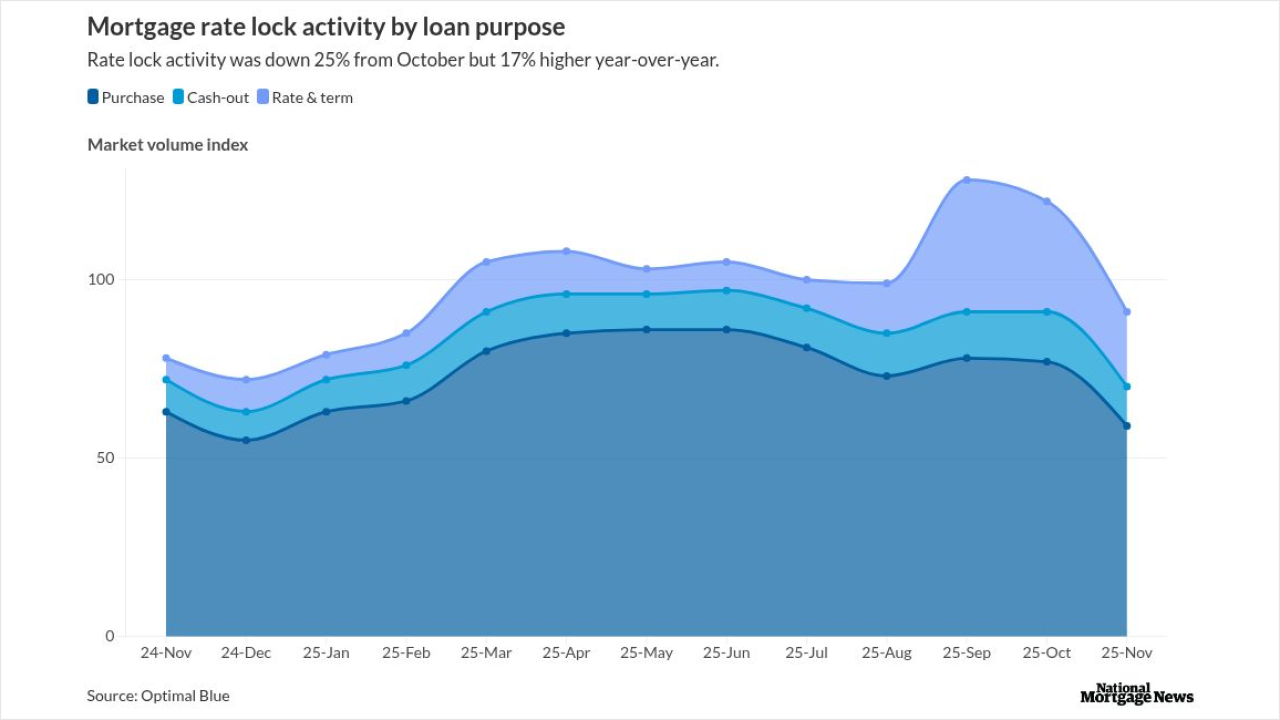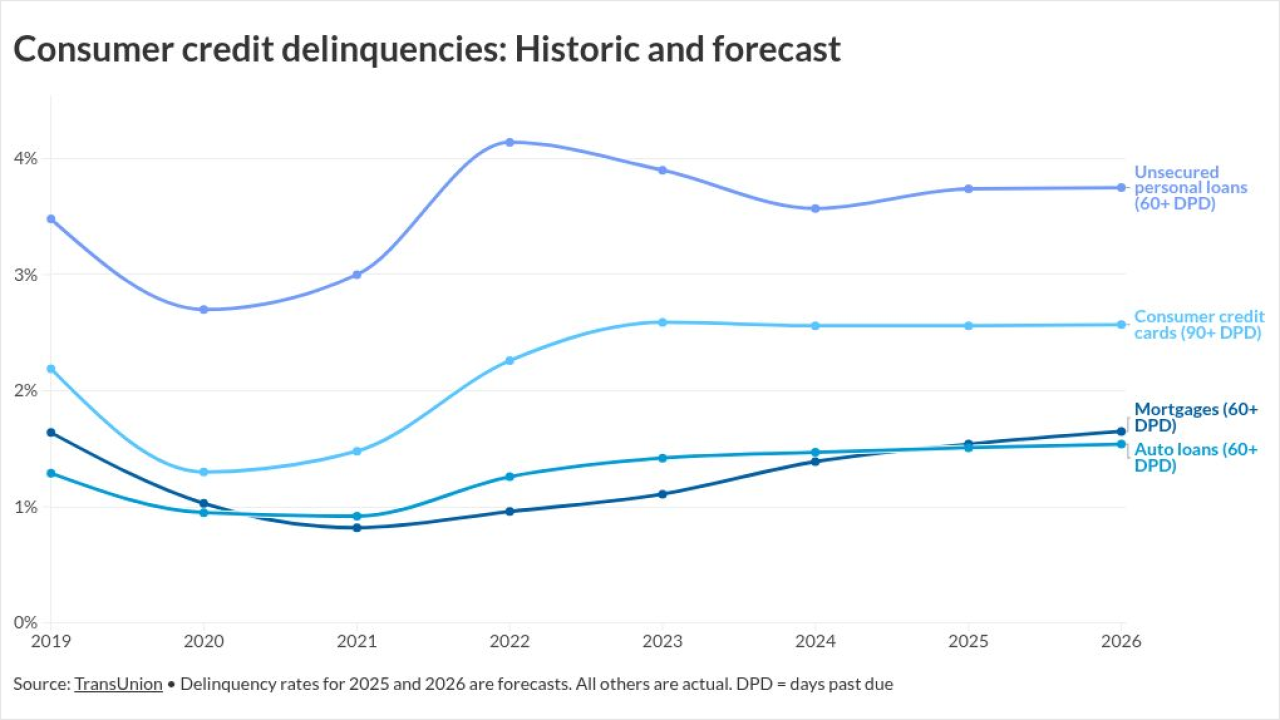Consumers in most credit score buckets are having a harder time paying back their credit cards, according to a new report that highlights a key challenge facing lenders on the eve of the holiday shopping season.
In September, late payments of 30 to 59 days rose to 0.75% of credit card balances, up from its pre-pandemic level of roughly 0.6%, VantageScore said in its monthly CreditGauge report. Credit metrics were unusually healthy for much of the pandemic, as fiscal stimulus and increased savings helped borrowers to stay on track with their credit card bills.
The uptick is "a clear sign that consumers are feeling the pressure of inflation and rate hikes," Susan Fahy, chief digital officer at VantageScore, said in a press release.

"Lenders should, therefore, be cautious as they head into the holiday shopping season as new originations could invite increased credit risk," Fahy said.
Consumers often spend big in November and December as they buy holiday gifts and take advantage of Black Friday sales. Some also fall behind on their card payments around the holidays, though the increased delinquencies are followed by seasonal improvements once tax refunds hit, according to a
The challenges for consumers in managing their debt have
But the VantageScore data shows that borrowers with prime credit scores also exhibited more signs of stress in September, with early-stage delinquency rates ticking up a bit and more borrowers being late by at least 60 days. Only super-prime consumers, who have credit scores between 781 and 850, showed some improvement.
The data follows mixed signals from bankers in recent weeks about consumers' financial health. During earnings calls earlier this month, industry executives reported higher delinquencies. But they also expressed optimism about the trends they're seeing.
"The consumer has been much more resilient than any of us anticipated a year ago," Brian Doubles, CEO of the credit card company Synchrony Financial, told analysts last week.
Rising delinquencies at the Stamford, Connecticut-based company reflect a return to their normal pre-pandemic levels, rather than deterioration,
Similarly, Capital One Financial said the uptick in borrowers' late payments
"We happen to see some pretty positive things here, but they can also be a head fake and not be as good as they appear," Fairbank said.
Overall, VantageScore's Fahy said in an interview, credit health remains in good shape. The average VantageScore credit score stayed at 701 for the third consecutive month. Credit card balances rose by 2.3% in September from a year earlier, but they fell slightly from the prior month.
Utilization rates on credit cards have stayed roughly flat for several months. That's a sign that consumers aren't loading up their cards, Fahy said.
Still, there is a "clear bifurcation" among consumers, with younger borrowers and those with lower credit scores coming under more pressure, she said. That will be critical for lenders to watch, given the recent resumption of federal student loan payments after a lengthy moratorium, which could strain the finances of consumers burdened by student debt.
Credit card lenders with more subprime customers, such as
Other card issuers reported in the third quarter that charge-offs remained below pre-pandemic levels. But that trend may change in the coming months, Hecht wrote, as card companies charge off delinquent debt owed by borrowers who they currently hope will get back on track.
The cautious optimism from consumer lenders is an "encouraging development," Wolfe Research analyst Bill Carcache wrote in an Oct. 30 note to clients. Still, that doesn't mean that banks are "out of the woods," he added, noting that a worsening in the U.S. economy could prompt more credit deterioration.
The "rate of acceleration in delinquencies is slowing" at issuers such as Capital One, he wrote, but "it would be a mistake to conclude that the worst of the consumer credit cycle is behind us."






